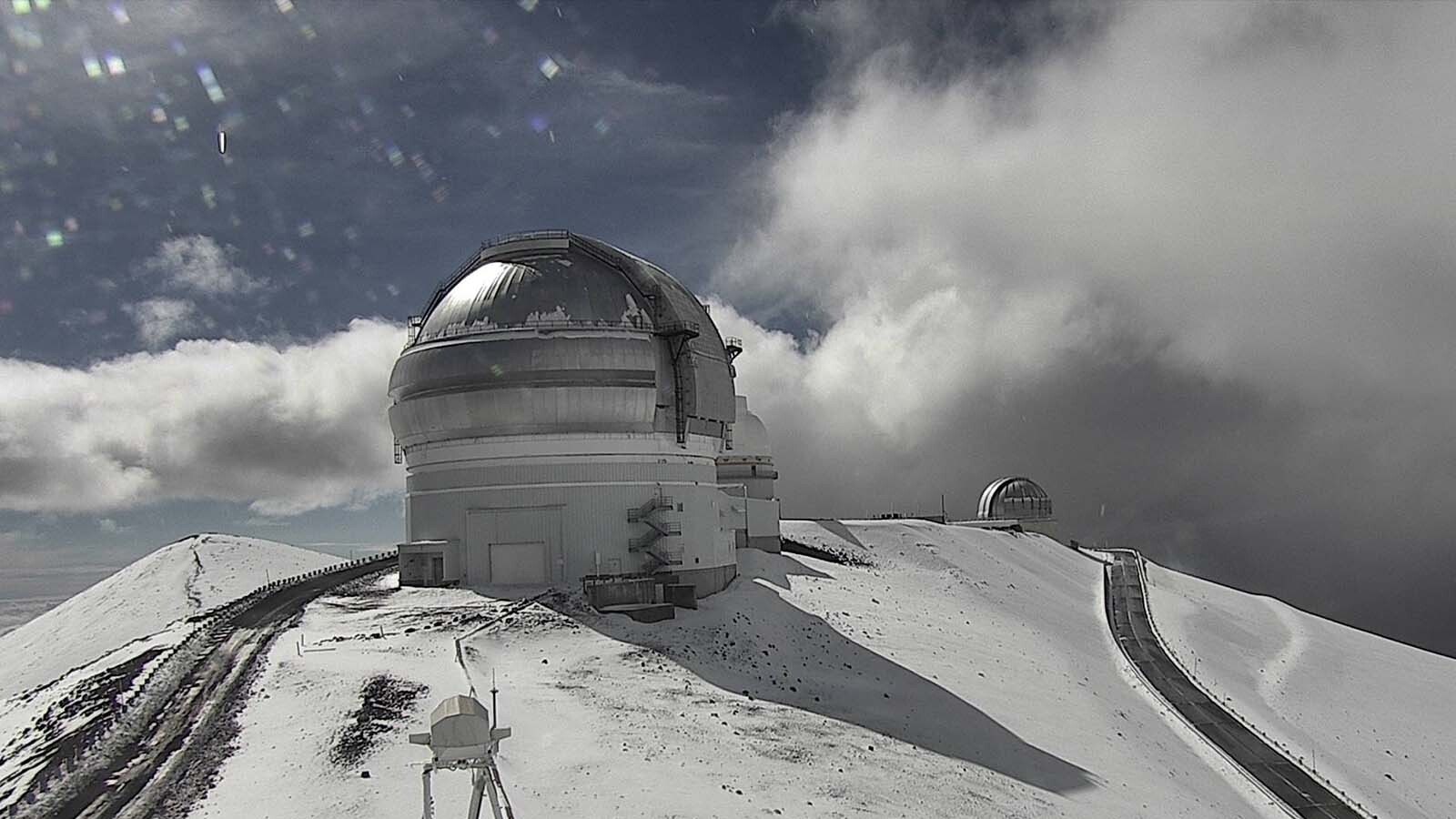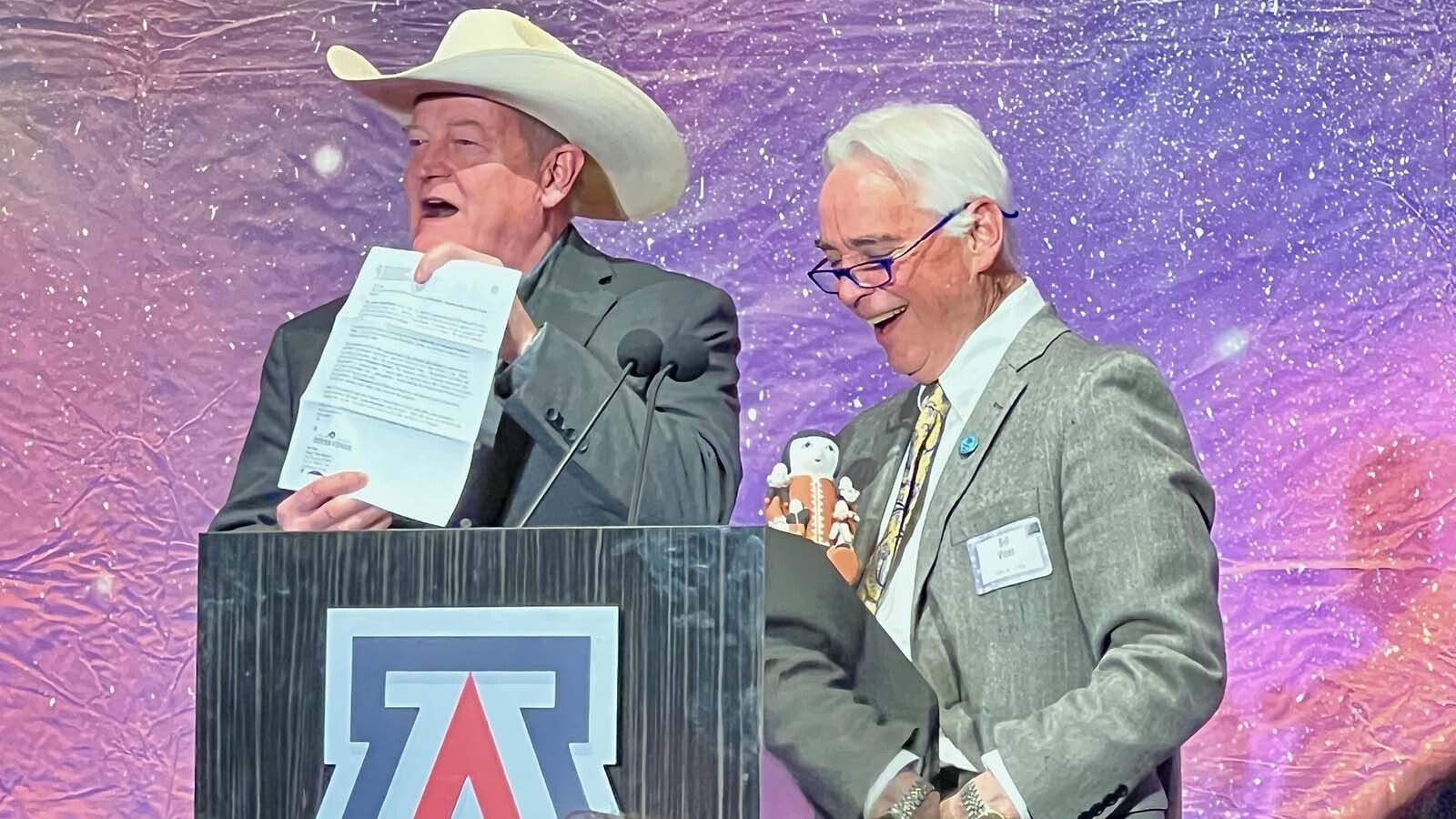The city of Cody sits at the bottom of the iconic Cedar Mountain, and Buffalo Bill Cody – allegedly — lies at the top. But midway up the mountain is a narrow path to a cavernous hole blocked by a thick metal gate. That’s how hikers know they’ve reached Spirit Mountain Cave.
“A cavern in the state of Wyoming, of unknown extent but of many windings and ramifications and containing chambers of large size,” said President William Howard Taft when he established Shoshone Caverns National Monument in 1909. “Magnificently decorated with sparkling crystals and beautiful stalactites, containing impenetrable pits of unknown depths is of great scientific interest and value to the people of the United States.”
If you’ve never heard of Shoshone Cavern National Monument, that’s because it no longer exists. It’s part of the cool air of mystery Spirit Mountain Cave retains to this day.
Cave Curiosities
Spirit Cave has been known by many names, but it was first known as Frost Cave when Cody resident Ned Frost discovered it in January 1909. Cody historian Bob Richard said Frost and Buffalo Bill Cody realized the cave’s potential as a tourist attraction for the burgeoning community.
“They saw it as something on the road to Yellowstone to help draw people to Cody,” he said. “So, they petitioned President Taft to make it a national monument.”
Taft complied with this request and established Shoshone Cavern National Monument on September 19, 1909, nine months after its discovery. The 210-acre parcel of federal land was Wyoming’s second national monument.
When the National Park Service (NPS) was established in 1916, it took responsibility for Shoshone Cavern National Monument. But there was a growing sentiment that the cave wasn’t reaching its potential under federal management.
Dark And Deep
There are two known entrances to Spirit Cave. Frost discovered the larger one, which leads into a large room that's 300 feet long, 100 feet wide, and 40 feet high.
Much of Spirit Mountain Cave has been mapped and explored, revealing multiple levels and passages of varying sizes and shapes. However, the full extent of the cave remains a mystery.
“At one time, they thought it was the deepest cave in the United States,” said retired geologist Henry Heasler. “There are tantalizing indications that the Spirit Mountain Caverns went all the way down to almost the current water level of the Shoshone River.”
The cavern system has been surveyed to over 4,000 feet below Spirit Mountain Cave’s main entrance. Some experts believe it might go further down, forming a network of underground passages under the Shoshone River and underneath the adjacent Rattlesnake Mountain.
The caves were formed by water rich in hydrogen sulfide, which etched away at the soft limestone of Cedar Mountain. It was speculated that the cave’s formation was connected to the known hydrothermal activity in and around Cody, but Heasler discovered that these were separate but simultaneous systems sharing the same area.
“One's not causing the other,” he said. “You have warm water that is high in hydrogen sulfide. That water is dissolving the limestones, and that's why you get the caves, but it's also why you get hot springs. It is all interrelated, but one does not cause the other.”
Abolished And Privatized
The 83rd Congress abolished Shoshone Caverns National Monument on May 17, 1954. It is one of the few national monuments abolished since Devils Tower National Monument was established as the first in 1906.
Cody residents lobbied for the abolishment, thinking that the cave would fare better in private hands, and the NPS did little to resist them. The 210 acres were transferred to the City of Cody.
Once the transfer was complete, Claud and Katie Brown leased the cave from the City of Cody. They opened it as Spirit Mountain Caverns in September 1957.
The origin of the name “Spirit Mountain” is unknown. “Caves of Wyoming,” a 1976 bulletin published by the Wyoming State Geological Survey, said it was derived from an Indigenous name referencing when Cedar Mountain was geothermically active, with geysers and hot springs scattered across the summit.
Currently, there is no archaeological evidence that Spirit Cave had any spiritual significance to any indigenous tribe. Richard believes there could be a connection, but it’s also just as likely that the Browns found marketability in a loose connection to history.
“I would say that ‘Spirit Mountain Caverns’ was a name that the Browns came up with,” he said. “I don't know that for sure, but that's what they used to promote the cave.”
More Than It’s Worth
When the Browns opened Spirit Mountain Caverns to the public, they tried to enhance it with electric lighting, a parking lot and tours for $1.50 a head. The entrance into the main cavern was greatly expanded into an arch. Stairs and platforms were chiseled into the floor, and passages were smoothed out for easier traversal.
The Browns quickly realized that turning the cave into a profitable tourist attraction would require immense investment and infrastructure.
“They proposed putting a tram from the highway up to the cave,” Richard said. “The City of Cody said, ‘No. Unacceptable. That’ll cost too much money,’ and there's records of that (discussion).”
Claud Brown estimated it would take $190,000 to build the tram from U.S. Highway 14 in the Shoshone Canyon up to Spirit Mountain Caverns but couldn’t find the money or the tourism to justify it. The Browns abandoned the cave and their lease in the 1960s.
Not What It Could Be
Outside of local hikers and a few spelunkers, Spirit Mountain Cave doesn’t attract much attention from tourists or scientists. There’s speculation that the cave’s commercialization ruined some of its scientific potential.
When it was first discovered, the cave was reportedly covered with crystals, but all traces of them are gone. Over time, the crystals were broken up and pocketed as souvenirs.
Meanwhile, Heasler said that the caverns that might have proven it to be the deepest cave in the country might have been permanently closed when the Browns altered the cave.
“The deep passages that people talk about can't be found or haven’t been found since 1970,” Heisler said. “There’s the possibility that cave commercialization sealed some of those entrances.”
Despite the earnest effort to get Spirit Cave away from the federal government, the City of Cody eventually returned it to the federal government. Once the Cody City Council voted to relinquish the cave and the acreage, it was absorbed into the Bureau of Land Management (BLM.)
The BLM manages Spirit Mountain Cave to this day, but there hasn’t been an effort or interest to realize the potential Frost and Buffalo Bill saw in the cave back in 1909. The only infrastructure that’s been added is the large steel gate covering the cave’s entrance, which requires a key and a permit to get in.
So, Spirit Mountain Cave exists as a monument to what it briefly was and might have been. However, Heasler still believes there’s an enormous amount of scientific potential deep in its unknown depths for future surveys and scientists to discover.
“I wish I would have had the knowledge and technology we have now when I was looking at this in the 1980s,” he said. “You could do all sorts of measurements and look at interrelations. That's a good task for future students to work on.”
Andrew Rossi can be reached at arossi@cowboystatedaily.com.
















